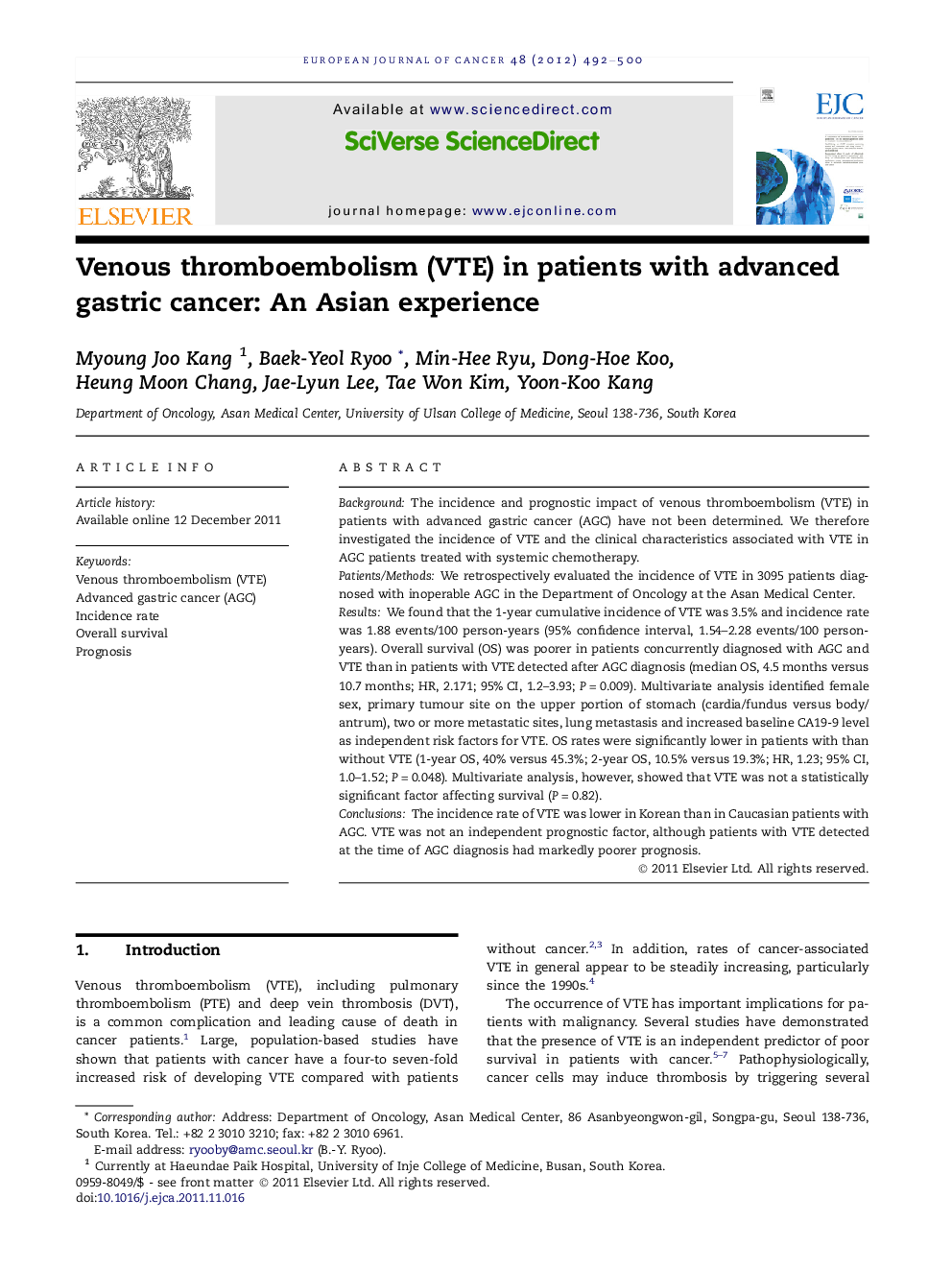| Article ID | Journal | Published Year | Pages | File Type |
|---|---|---|---|---|
| 2122236 | European Journal of Cancer | 2012 | 9 Pages |
BackgroundThe incidence and prognostic impact of venous thromboembolism (VTE) in patients with advanced gastric cancer (AGC) have not been determined. We therefore investigated the incidence of VTE and the clinical characteristics associated with VTE in AGC patients treated with systemic chemotherapy.Patients/MethodsWe retrospectively evaluated the incidence of VTE in 3095 patients diagnosed with inoperable AGC in the Department of Oncology at the Asan Medical Center.ResultsWe found that the 1-year cumulative incidence of VTE was 3.5% and incidence rate was 1.88 events/100 person-years (95% confidence interval, 1.54–2.28 events/100 person-years). Overall survival (OS) was poorer in patients concurrently diagnosed with AGC and VTE than in patients with VTE detected after AGC diagnosis (median OS, 4.5 months versus 10.7 months; HR, 2.171; 95% CI, 1.2–3.93; P = 0.009). Multivariate analysis identified female sex, primary tumour site on the upper portion of stomach (cardia/fundus versus body/antrum), two or more metastatic sites, lung metastasis and increased baseline CA19-9 level as independent risk factors for VTE. OS rates were significantly lower in patients with than without VTE (1-year OS, 40% versus 45.3%; 2-year OS, 10.5% versus 19.3%; HR, 1.23; 95% CI, 1.0–1.52; P = 0.048). Multivariate analysis, however, showed that VTE was not a statistically significant factor affecting survival (P = 0.82).ConclusionsThe incidence rate of VTE was lower in Korean than in Caucasian patients with AGC. VTE was not an independent prognostic factor, although patients with VTE detected at the time of AGC diagnosis had markedly poorer prognosis.
